
The Star Wars franchise houses some of the most unique, awe-inspiring visuals and drama in all of cinema. Many can identify the series at the sight of a lightsaber, the screech of a TIE Fighter, or the sound of Darth Vader's chilling breathing. But there's so much more to the galaxy far, far away. Beyond the superficial iconography, Star Wars boasts incredibly deep, thought-provoking stories.
To recognize this, The Direct is proud to introduce What's In A Scene. Inspired by Dave Filoni's brilliant rant on the Duel of the Fates, this series will breakdown pivotal moments in the Star Wars franchise, taking a deep-dive into the characters, relevant themes, and connections to other major sequences.
After thousands of viewings, Star Wars fans can still find new things in scenes they know better than the backs of their hands. George Lucas has long been known for his masterful skills as a visual storyteller, but the lengths to which The Maker went to drive home the importance of his messages often goes underappreciated. With this series, we hope to shine a spotlight on Lucas' efforts, and those of the storytellers he inspired.
To launch the series, the first scene to be broken down comes from the climax of Revenge of the Sith. Following Anakin Skywalker's turn to the dark side, the galaxy is in turmoil as his loved ones rush to face him - and save his soul. What transpires is one of the most pivotal sequences in all of Star Wars, one that will alter the galaxy forever.
THE FATEFUL CONFRONTATION
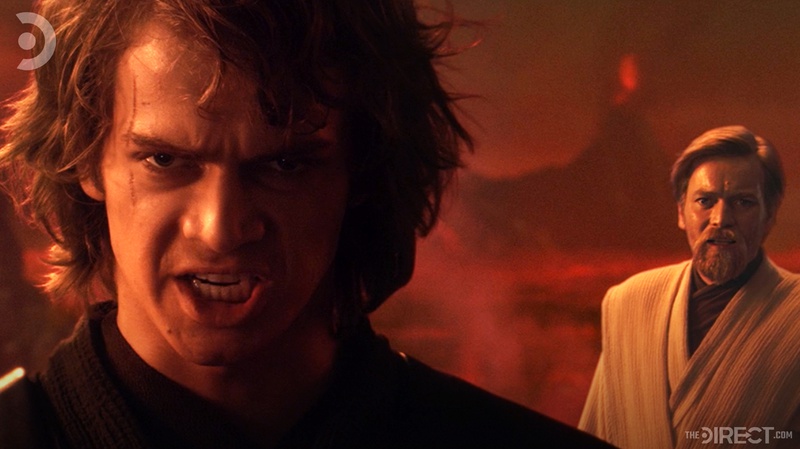
The Jedi Order is dead. The Republic has fallen. The Galactic Empire reigns.
Anakin Skywalker, now assuming the identity of Darth Vader, has journeyed to Mustafar to "take care" of the Separatist Council. A violent rampage of the defenseless puts an abrupt end to the Clone Wars and Anakin, despite his pain and regret, is gone. His wife, Padme Amidala, travels to the volcanic world to confront her husband, hoping to save his soul. The sudden appearance of Obi-Wan Kenobi sends Skywalker into a conniption, as he lashes out at Amidala and engages his former Master in a lightsaber duel that will determine the fate of the galaxy.
DARTH VADER
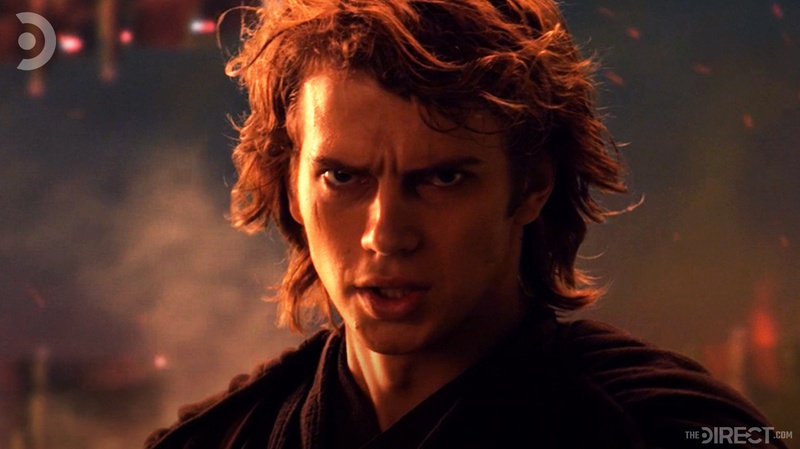
I have brought peace, freedom, justice, and security to my new Empire!
- Darth Vader
The most interesting aspect of this scene is that we all refer to him as Anakin, but this is really Darth Vader. When Padme first arrives, Vader puts the facade of Anakin on, while trying to sell her on his new plan to rule the galaxy. The same happens on Padme's veranda following the great purge; the Anakin being presented is a lie. Darth Vader's iconography is so engrained in pop culture that it's hard to see him as anything but the man in the suit. But the Vader we see now is equally merciless and far more dangerous, as he's been completely consumed by his lust for power. Imagine any of his lines in the voice of James Earl Jones, and there's a perfect match.
Up until his massacre of the Separatist leadership, Anakin's primary objective in the film had been to prevent his wife's death. Even after Order 66, Vader was justifying his actions as being a means to an end. But there is no 'end' with the dark side. It's a constant push for more, an insatiable desire for power. When Vader's eyes finally turn yellow, he's fully consumed by the dark side. He weeps tears of regret following the CIS slaughter, knowing that what he's done is wrong, but he craves more power. This is fully displayed during his confrontation with Padme - the goal had gone from just saving her, to now ruling the galaxy together.
In The Empire Strikes Back, Yoda describes the dark side as the "quick and easy path". While that lesson for Luke was meant to drive home the idea that staying in the light is the work of a lifetime, the word quick is a suitable descriptor for Vader in this sequence.
When the confrontation first begins, Vader's darkness is tucked away as Anakin is displayed. When Padme begins to list out the dark deeds he's accused of, Vader's anger slowly begins to simmer and grows nearly to the breaking point at the mention of Obi-Wan and the Jedi. At the sight of his Master, Vader loses all control, choking his wife, and goes into a tirade against Kenobi. His anger went from 0 to 100 almost instantly, and he was blinded by his rage. Vader has completely gone off the deep end, beyond the point of reason, and his own anger turns his loved ones against him, despite the irony in his belief that he was the aggrieved party.
In this scene, Anakin didn't just lose his wife, mentor, and unborn children. He also lost himself. He's become so consumed by hate that he can't be reached by his closest loved ones, and his power hungry craze that we see when the Anakin facade drops shows how far the mighty hero has fallen. It's emphasized throughout the Prequel Trilogy that Anakin Skywalker is a compassionate boy with a kind heart and strong bonds to those he cares for. As he lashes out in anger at the two people most important to him, Vader has completely destroyed Anakin, with only a sliver of that light presence remaining, buried deep away.
PADME AMIDALA
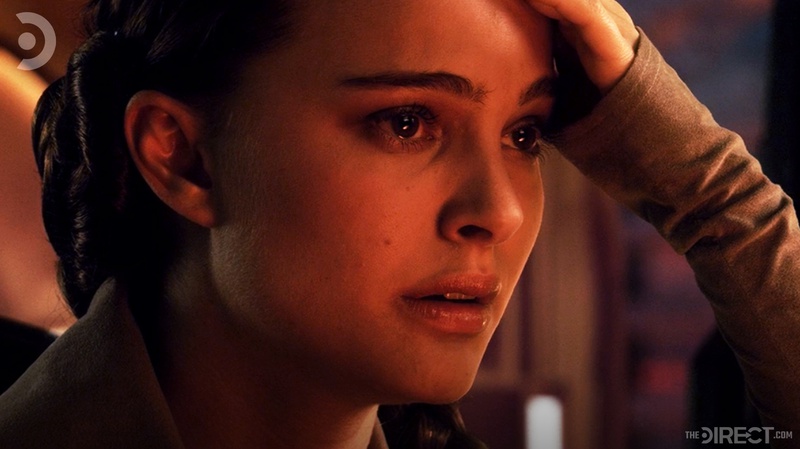
I don't believe what I'm hearing... Obi-Wan was right... you've changed...
- Padme Amidala
This sequence presents the final chance for Anakin to be reached and decades of darkness to be avoided. In Attack of the Clones, Padme sits beside Anakin in the Lars homestead as he confesses to wiping out a Tusken Raider tribe. The distinguished sees first-hand the kind of darkness that lies within Anakin and the destruction he's capable of. Despite this, she refuses to accept that her husband could have committed any of the atrocities Obi-Wn accuses him of. Padme's inability to recognize and believe that Anakin could fall to the dark side is the greatest flaw in an otherwise exemplary person, one that will go punished when she learns the truth.
While Anakin was gradually breaking over the course of the film, so was Padme. Her concern for her husband as he struggles with his feelings is palpable, and the former queen begins to crumble when the Jedi Temple is set ablaze. Disaster continues for Amidala as the Republic is completely disbanded, alongside the democracy and freedom she believed in.
Obi-Wan's visit and the claims of Anakin's fall crush Padme even more, to the point where she needs to find her husband to discover the truth for herself. When Padme lands on Mustafar and holds her head in her hand emptily, a sad rendition of Across the Stars playing one final time, she's emotionally defeated and afraid she might not like the truth she'll discover. The woman who commanded such great presence in every room now feels small and powerless.
It's a fascinating thing, seeing someone normally so bound by their duties asking her husband to run away with her while suffering on a galactic scale is imminent. Padme knows that she, like everyone else, was a pawn in Palpatine's machinations, and that there's nothing she can do to stop the Sith.
Although Padme refuses to accept Obi-Wan's claims of Anakin's fall, she knew at some level that there was the possibility that he could be corrupted by darkness, which is why she goes to him in the first place. At the end of the day, there was nothing more important to Padme than raising her child alongside her husband peacefully, with the violence and plotting of the war all but a memory.
As she's speaking with Vader, listing out the things Obi-Wan has accused him of, Padme is trying to convince herself that the situation is an absurdity. But there's something off about her husband. He doesn't deny any of the allegations, only declares that his power has grown and gets defensive at the mention of Obi-Wan. While he does state that everything he's done is for her, Vader's hunger for power has completely consumed him, and the goal of saving Padme has evolved into a proposal to rule the galaxy. Padme backs away from her husband, having slowly watched him turn into an unrecognizable monster. This is no longer Anakin Skywalker.
The strong queen and senator breaks down, having finally her breaking point of grief. She makes one final impassioned plea for him to let go of his hate and come back to her, but the appearance of Obi-Wan sends Vader over the edge. Had Obi-Wan not been present, would Padme have succeeded in saving Anakin? Probably not. By this point, Vader was drunk on power, consumed by the desire to dominate. But Padme still held out hope, even after he lashed out and choked her with the Force. Anakin's Betrayal appropriately plays as this heartbreaking moment unfolds, as Vader has now fully turned on his loved ones and himself, but releasing Padme from the choke hold came from last bits of Anakin that remained.
OBI-WAN KENOBI
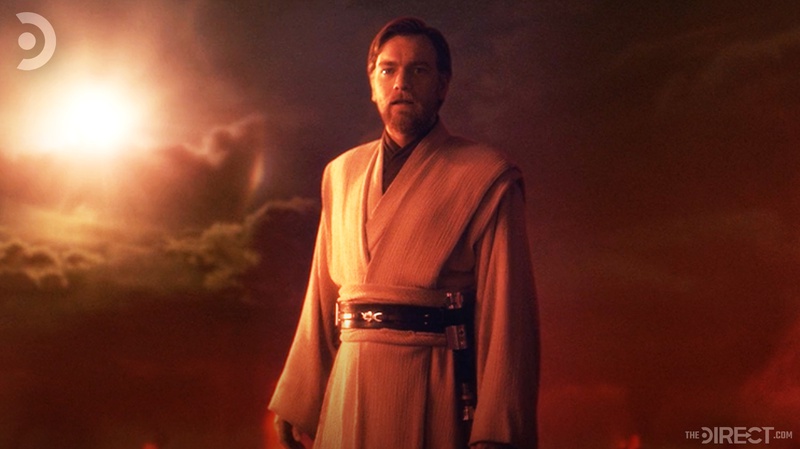
You have allowed this dark lord to twist your mind until now... until now you have become the very thing you swore to destroy.
- Obi-Wan Kenobi
For all intents and purposes, Obi-Wan represents the devil on Anakin's shoulder in this scene. What makes his role here unique is that he doesn't enter the scene until about halfway through, but his presence is felt from the beginning. To understand how Obi-Wan really factors into this sequence, we need to take a step back.
Right from the start, Anakin Skywalker was greeted by the Jedi with a cold shoulder. Qui-Gon was always kind and compassionate, but even Obi-Wan initially referred to the young boy as "another pathetic life form". The Jedi Council was even worse. Despite the undeniable power within Anakin, the Council rejected the boy, instead pulling him apart by prying on his fears. While he was later accepted into the Order, Anakin's relationship with the Council hardly improved, with the exception being Yoda. In time, Obi-Wan came to look at Anakin as a brother, but he was very rigid in his adherence to the Jedi Code and Anakin's frequent disobedience often resulted in conflict between the two. When Anakin finally falls to the dark side, his true gripe is, and had always been, with the Council. However, Obi-Wan was the middle man between the two parties and represented the Order that Anakin grew to resent, making the mention of his name a source of anger.
When Mace Windu tells Anakin that Sidious is "too dangerous to be left alive", something the Sith Lord himself had said earlier in the film, Anakin realized the Jedi truly were hypocrites and felt betrayed. Every time Padme mentions Obi-Wan on the landing pad, Vader grows more irritated, reminded of the perceived treachery of the Jedi Order. Vader has given way to selfishness and adopted a "me vs them" mentality which, while not entirely far from the truth, has been twisted into a motivation for destruction and power. Obi-Wan, having heeded Yoda's words and accepted that Anakin was gone, went to confront his former student, himself falling prey to the arrogant teachings of the Jedi.
Had Obi-Wan not interrupted Padme's plea for Anakin's return, perhaps the fallen hero could have given up on the dark side. The chances were low, but Kenobi never gave Vader a chance. Obi-Wan knew that his sudden appearance would send his old friend over the edge and, while able to convince him to release Padme, he had escalated the situation to new heights.
The ensuing argument was one of finger pointing and ethics. Kenobi correctly concludes that Vader himself was at fault for pushing away his wife and had allowed Sidious to twist his way of thought. However, he represents the hypocrisy of the Jedi dogma when he declares that only the Sith deal in absolutes - which is itself an absolute.
Despite Vader's anger, he's still not prepared to kill his former Master. He falls deeper into darkness as he relishes in bringing "freedom" to the Empire, but only after Obi-Wan questions that does Vader threaten to kill him. Had Obi-Wan agreed to join Vader or walked away, the latter likely would have allowed it. But Vader was a serious threat, and Kenobi had already signed Anakin's death warrant before his arrival to Mustafar. Vader couldn't be reasoned with, and the man standing before Obi-Wan was no longer Anakin Skywalker. For the sake of the galaxy, he needed to stop the menace of his former student. Obi-Wan, filled with despair and regret, drew his lightsaber first, unable to recognize his own failings until later. Vader would not tolerate any threat to his power and was prepared to destroy his old mentor and brother at any cost.
Now, it's time to fight.
POSSESSION
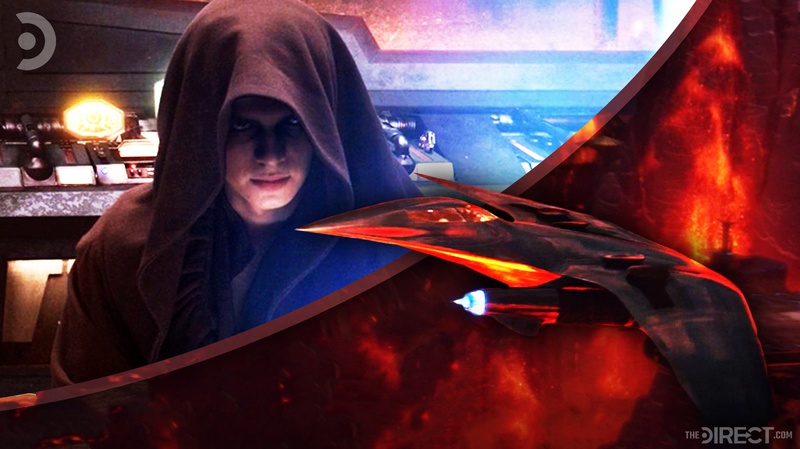
At the center of every Sith Lord's dark heart is the desire to possess. Both George Lucas and Dave Filoni have discussed this concept at great length, emphasizing that the Sith and the dark side represent selfishness. As the Sith fall deeper into darkness, they fall into an endless cycle of seeking more, to satiate their greed. This idea is explicitly addressed by Obi-Wan Kenobi in Star Wars Rebels, picking apart the twisted motivations of the dark side.
If you define yourself by your power to take life, the desire to dominate, to possess... then you have nothing.
- Obi-Wan Kenobi
Anakin found himself in a situation where he couldn't bear to lose another loved one, and his possessive nature got the better of him as he couldn't bring himself to let go. The Jedi discouraged love and often came off as uncaring, alienating Anakin from their ranks and forcing him to eventually make a deal with the devil to address his fears. His possessiveness came from a good place, but as he was corrupted by Sidious and fell to the dark side, that possession of his wife evolved. Before long, his desire to save Padme at any cost was overridden by his greed and selfishness, as Vader sought to possess control over others and immeasurable power.
Every message about the dark side is laid bare by Lucas in this scene, as each phase of darkness is demonstrated through Vader. He rationalizes his actions to Padme as efforts made to protect her, but he's quickly consumed by the thought of overthrowing Palpatine and ruling the galaxy himself, with his wife at his side. After choking out Padme and declaring that she can't be taken from him, Vader claims his atrocities to be a peaceful endeavor in the name of his new Empire. It's not about Padme anymore. It's about himself.
This is the dark side.
HOPE
This theme can be applied to nearly every key moment in a Star Wars project. It's the unifying concept behind the entire saga, so much so that original has "hope" in the subtitle.
Revenge of the Sith is by far and away the darkest Star Wars film. Nearly every good guy dies, those who don't are forced into exile, and the main character suffers a fate so dark that death may have seemed ideal. In the climactic scene at hand, things couldn't seem anymore hopeless. Anakin has solidified himself as a lost cause while Obi-Wan, unbeknownst to Padme, stowed away aboard her ship to confront her husband in a duel to the death. She's forced to watch the love of her life fall apart before her very eyes into a contemptible madman, drunk on power and machinations of overthrowing the Emperor. Yet she still has hope for her husband, hope that he can find the light and come back to her, that there's still a chance for their family.
Even later in death, Padme's final words are hopeful, expressing her belief that somewhere deep within Darth Vader, Anakin Skywalker remains. As she's laid to rest, Padme clutches the Japor snippet Anakin gave her as a young boy, representing the hope she held onto for his return to the light. It's very poignant, knowing the last she saw of her husband was the monster who lashed out at her with the dark side of the Force. But it's true to Star Wars, and it's something carried forward by her son, Luke. Everyone had lost hope for Anakin. Yoda declared he was gone. Obi-Wan determined he had no choice but to kill his old friend. Even Anakin lost hope for himself, which led to his fall from grace in the first place.
Yet Padme's faith remained, something incredibly important for Vader's story over two decades later. That belief in Anakin's inherent goodness planted a seed in Vader that would be discovered by Luke Skywalker - and that recognition allowed him to save his father's soul. As hopeless as the confrontation on Mustafar seems, it's critical in paving the way for Vader's redemption.
As always, hope saved the galaxy.
GALACTIC TIES
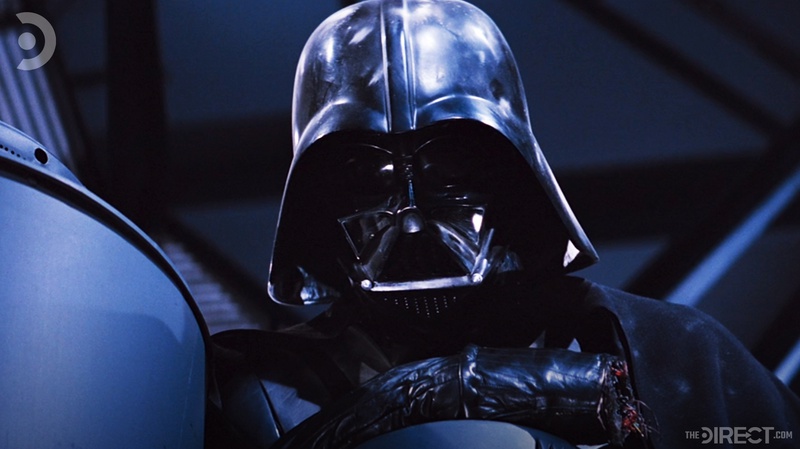
It's not a coincidence that Revenge of the Sith and Return of the Jedi parallel in so many ways. Beyond the titles involving the two main Force-using religions and their related goals, the films conclude each of George Lucas' trilogies. Revenge of the Sith is about the demise of Anakin Skywalker and rise of Darth Vader, whereas Return of the Jedi focuses on Vader's downfall and the rebirth of the Chosen One. As a result, there are several sequences in the conclusion of Lucas' story that are presented in the same way that key sequences are depicted in Episode III.
For Darth Vader, everything is about choice. In Revenge of the Sith, we see that Anakin Skywalker is a powerful hero who can't get over his fears. Those fears lead to a chain reaction of terrible decisions that result in the rise of Vader and the Empire, and Anakin loses everything as a consequence. In Return of the Jedi, there are two pivotal sequences that present Vader with similar choices he had to make on Mustafar.
Come away with me...
- Padme Amidala
The return of Anakin Skywalker really begins when his son comes to him on Endor. Like Padme, Luke went to Vader with the hope of bringing him back, pushing him to let go of his hate. Also like his mother, Luke proposes that his father leaves the dark side behind and comes with him. Once again, Obi-Wan is a phantom devil on Vader's shoulder, this time symbolizing his regret for the terrible decisions he made. On Mustafar, Vader's anger grew and Anakin was buried deeper away; on Endor, Luke breaks Vader down to the point of silence and true contemplation. He's been given a chance for forgiveness and a way back to the light, if he can bring himself to let go of the dark.
Come with me.
- Luke Skywalker
The entire sequence in the Emperor's throne room on the Death Star parallels heavily with the confrontation on Mustafar as well. Instead of the devil on Vader's shoulder, we have the devil himself in the form of Palpatine. Luke once again serves the same role for Vader that Padme did, a force of hope and good that pushes his father to overcome the dark side. During their duel, Vader asserts that he feels no conflict, but even he doesn't believe it - juxtaposing his declaration of power and the freedom he brought to his Empire decades earlier.
As Luke is on the ground, being cooked alive by the Emperor's lightning, Vader is yet again given a choice, and an opportunity to remedy his previous misjudgments. Everything he did that led to the path of the dark side was done in the name of saving Padme. Now he has the opportunity to save another loved one, this time by embracing the light. And he does. In an act of love, Anakin grabs the Emperor and throws away the physical embodiment of the dark side, saved by the belief in his son that resided in his wife before.
You were right about me.
- Anakin Skywalker
THE FORCE WILL BE WITH YOU
For all of the world building in the Prequel Trilogy, all of the dynamic, densely populated locations with unique aliens and dynamic battles, it's an intimate scene with three humans on a remote world that will decide the fate of the entire galaxy. This is George Lucas at his best. Star Wars has always had grandeur and scale, but at the heart of these stories are the characters and their personal conflicts.
The tragedy of Darth Vader is summed up completely during the confrontation on Mustafar. A good hearted man succumbs to his fears of loss, and in making terrible choices he ends up losing everything, himself included. Like always, there's wisdom in this scene that Lucas is trying to impart.
We have to let go of what we can't control. There are many aspects of life that are out of our hands, and no amount of power can change that. If we get greedy, try to possess others, we can self-destruct.
But there's always someone out there willing to give us a chance. We can always let go of our fears and make a leap of faith. We can always let go of our misdeeds and strive to do better. We can always have hope for a brighter tomorrow.
We can always believe.
STAR WARS Writer












